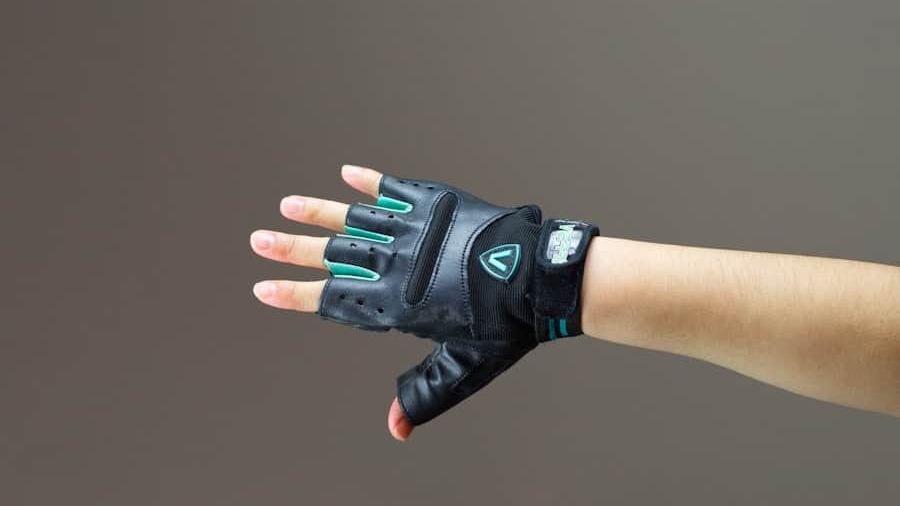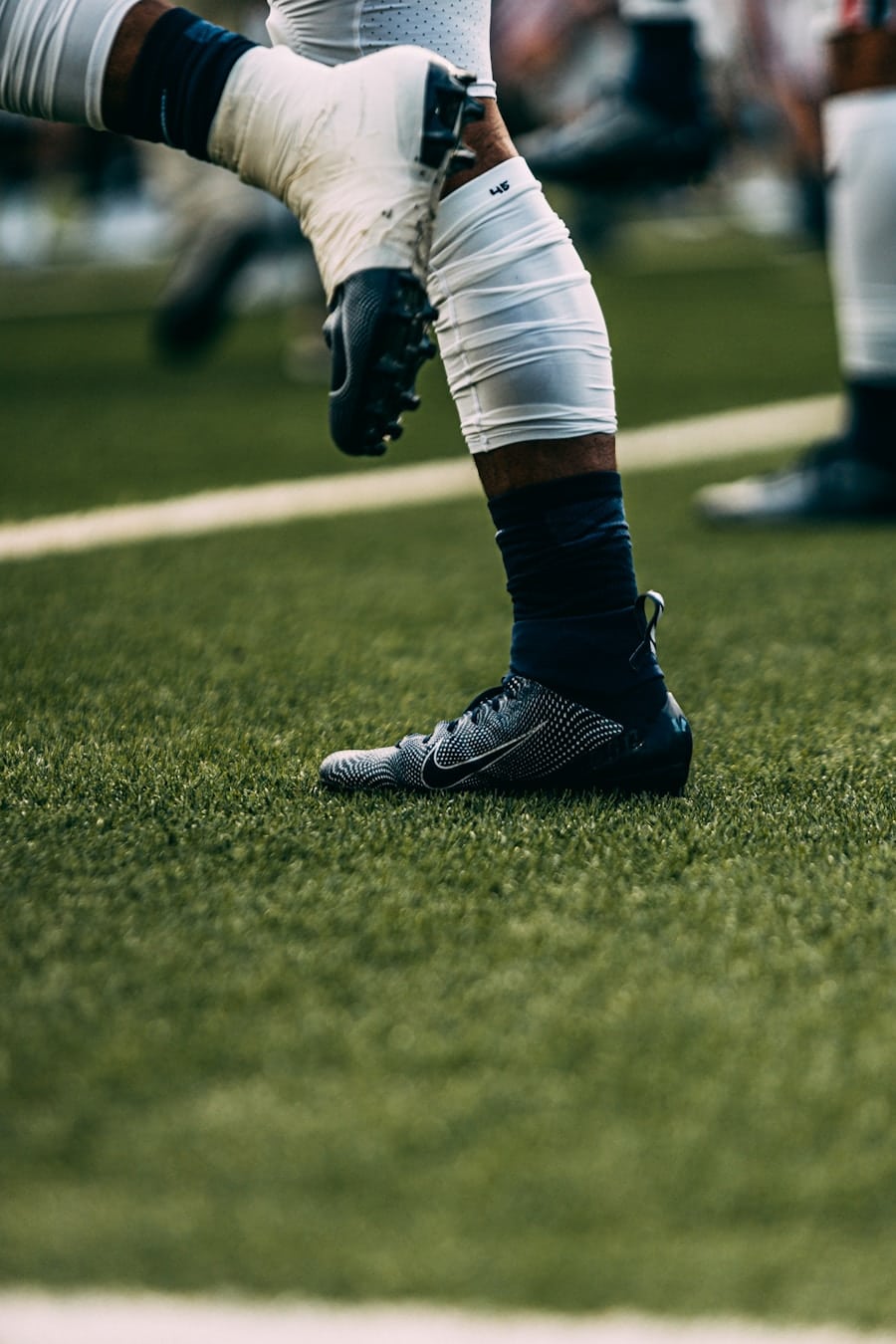The integration of wearable technology into high-impact sports has revolutionized the way athletes train, compete, and recover. These devices, which can range from smartwatches to specialized sensors embedded in clothing, provide real-time data that can significantly enhance performance and safety. In high-impact sports such as football, rugby, and basketball, where the risk of injury is notably high, wearables serve as a critical tool for monitoring athletes’ physical conditions and biomechanics.
The ability to collect and analyze data on movement patterns, impact forces, and fatigue levels allows coaches and trainers to make informed decisions that can prevent injuries and optimize training regimens. Wearable technology has evolved rapidly over the past decade, driven by advancements in sensor technology, data analytics, and wireless communication. Athletes are now able to access a wealth of information about their performance metrics, including heart rate, speed, acceleration, and even muscle activation.
This data not only aids in enhancing athletic performance but also plays a pivotal role in injury prevention strategies. As the sports industry continues to embrace these innovations, the potential for wearables to transform athlete care and performance is becoming increasingly evident.
Key Takeaways
- Wearable technology is revolutionizing high-impact sports by providing real-time data on biomechanics, movement patterns, impact detection, fatigue, and injury prevention.
- Monitoring biomechanics and movement patterns through wearables helps athletes and coaches optimize performance and reduce the risk of injury.
- Impact and collision detection technology in wearables can alert athletes and coaches to potentially dangerous situations, allowing for immediate intervention.
- Wearables can track fatigue and overexertion, providing valuable insights into an athlete’s physical condition and helping to prevent overtraining and injury.
- Real-time feedback from wearable technology can help prevent injuries by alerting athletes to dangerous movement patterns and providing guidance for safer techniques.
Monitoring Biomechanics and Movement Patterns
One of the most significant applications of wearable technology in high-impact sports is the monitoring of biomechanics and movement patterns. Devices equipped with accelerometers, gyroscopes, and magnetometers can capture detailed information about an athlete’s movements during training and competition. For instance, a wearable sensor placed on an athlete’s body can track joint angles, gait patterns, and overall body mechanics.
By analyzing movement patterns, coaches can tailor training programs to address specific biomechanical issues. For example, if a basketball player exhibits excessive lateral movement during a jump shot, this could indicate a risk for ankle or knee injuries.
With the insights gained from wearables, trainers can implement corrective exercises that focus on strengthening the relevant muscle groups and improving overall stability. Furthermore, continuous monitoring allows for real-time adjustments to training regimens based on an athlete’s performance trends, ensuring that they are always working within their optimal biomechanical parameters.
Impact and Collision Detection
In high-impact sports, understanding the forces exerted during collisions is crucial for both performance enhancement and injury prevention. Wearable devices equipped with impact sensors can measure the magnitude and direction of forces experienced by athletes during gameplay. For example, in contact sports like rugby or American football, players often endure significant impacts that can lead to concussions or other serious injuries.
By utilizing wearables that detect these impacts, coaches and medical staff can assess whether an athlete has sustained a potentially harmful collision. The data collected from impact sensors can be analyzed to determine the frequency and severity of collisions an athlete experiences over time. This information is essential for developing protocols that prioritize player safety.
For instance, if a rugby player consistently experiences high-impact collisions during matches, it may prompt a reevaluation of their playing position or training methods to mitigate risk. Additionally, real-time alerts can be generated when an athlete sustains a hit above a certain threshold, allowing for immediate medical evaluation and intervention if necessary.
Tracking Fatigue and Overexertion
Fatigue is a significant factor in high-impact sports that can lead to decreased performance and increased injury risk. Wearable technology has made it possible to monitor fatigue levels through various physiological metrics such as heart rate variability (HRV), sleep quality, and muscle recovery indicators. By analyzing these metrics, coaches can gain insights into an athlete’s readiness to perform and their overall physical condition.
For example, a wearable device may track an athlete’s heart rate during training sessions and compare it to their baseline levels. If an athlete’s heart rate remains elevated longer than usual after exertion, it may indicate that they are experiencing fatigue or insufficient recovery. Coaches can use this information to adjust training loads accordingly, ensuring that athletes do not push themselves beyond their limits.
Moreover, wearables can help identify patterns of overexertion over time, allowing for proactive measures to be taken before injuries occur.
Injury Prevention through Real-Time Feedback
Real-time feedback is one of the most powerful features of wearable technology in high-impact sports. Athletes can receive immediate insights into their performance metrics during training sessions or competitions, enabling them to make instant adjustments to their techniques or strategies. For instance, if a soccer player is using a wearable device that monitors their running form, they may receive alerts about improper posture or excessive strain on certain joints while they are still on the field.
This immediate feedback loop allows athletes to correct their movements before they develop into bad habits or lead to injuries. Coaches can also utilize this data to provide targeted guidance during practice sessions. For example, if a basketball player consistently lands awkwardly after jumps, real-time feedback from wearables can prompt immediate coaching interventions focused on improving landing techniques.
This proactive approach not only enhances performance but also significantly reduces the likelihood of injuries associated with poor biomechanics.
Wearable Technology for Injury Rehabilitation
The role of wearable technology extends beyond injury prevention; it is also instrumental in rehabilitation processes following injuries. Wearables can track an athlete’s recovery progress by monitoring key metrics such as range of motion, strength levels, and functional movement patterns. For instance, after an athlete undergoes surgery for an ACL tear, wearable sensors can be used to assess their knee stability during rehabilitation exercises.
By collecting data throughout the rehabilitation process, medical professionals can tailor recovery programs to meet the specific needs of each athlete. If a wearable device indicates that an athlete is struggling with certain movements or exhibiting compensatory patterns due to pain or weakness, therapists can adjust their rehabilitation protocols accordingly. This personalized approach not only accelerates recovery but also ensures that athletes return to their sport with confidence in their physical capabilities.
Enhancing Performance and Reducing Injury Risk
The dual focus on enhancing performance while reducing injury risk is at the heart of wearable technology’s impact on high-impact sports. By providing athletes with comprehensive data about their physical condition and performance metrics, wearables empower them to make informed decisions about their training regimens. For example, a runner may use a wearable device that tracks their pace and stride length while also monitoring their heart rate and fatigue levels.
With this information at their fingertips, athletes can optimize their training sessions by adjusting intensity levels based on real-time feedback. This not only helps them achieve peak performance but also minimizes the risk of overtraining or injury due to improper pacing or technique. Furthermore, as athletes become more attuned to their bodies through the insights provided by wearables, they develop a greater understanding of their limits and how to push them safely.
Future Developments in Wearable Technology for Injury Prevention
As technology continues to advance at a rapid pace, the future of wearable technology in high-impact sports holds immense promise for further enhancing injury prevention strategies. Innovations such as smart textiles embedded with sensors capable of measuring muscle activity in real-time are on the horizon. These developments could provide even more granular insights into an athlete’s biomechanics and fatigue levels during competition.
Moreover, advancements in artificial intelligence (AI) and machine learning will likely play a significant role in analyzing the vast amounts of data generated by wearables. By leveraging AI algorithms, coaches and medical professionals could identify patterns and correlations that may not be immediately apparent through traditional analysis methods. This could lead to more effective injury prevention protocols tailored specifically to individual athletes based on their unique movement patterns and physiological responses.
In addition to these technological advancements, there is potential for greater integration between wearables and other health monitoring systems. For instance, combining data from wearables with nutrition tracking apps could provide a holistic view of an athlete’s health and performance metrics. This comprehensive approach would enable athletes to optimize not only their training but also their recovery strategies through better nutrition and lifestyle choices.
The future landscape of wearable technology in high-impact sports is poised for transformative changes that will enhance both performance outcomes and safety measures for athletes at all levels. As these innovations continue to unfold, the potential for wearables to redefine how athletes train, compete, and recover becomes increasingly evident.
A related article to How Wearables Help Prevent Injuries in High-Impact Sports is “Best Software to Create Training Videos” which can be found at




